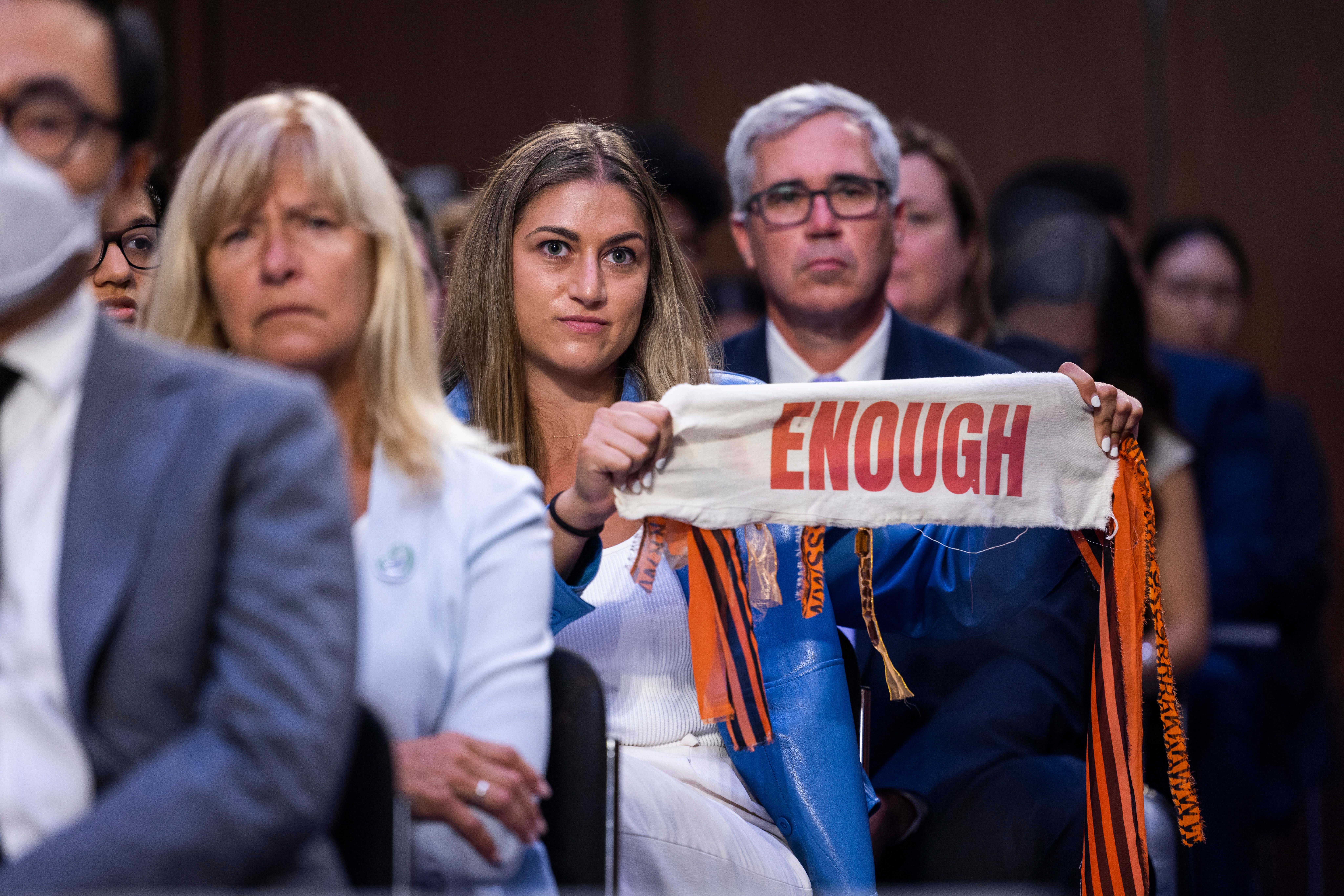Highland Park mayor describes mass shooting chaos in Senate testimony: ‘How do we call this freedom?’
‘American mayors fear not if, but when, a mass shooting is going to hit our towns’
Your support helps us to tell the story
From reproductive rights to climate change to Big Tech, The Independent is on the ground when the story is developing. Whether it's investigating the financials of Elon Musk's pro-Trump PAC or producing our latest documentary, 'The A Word', which shines a light on the American women fighting for reproductive rights, we know how important it is to parse out the facts from the messaging.
At such a critical moment in US history, we need reporters on the ground. Your donation allows us to keep sending journalists to speak to both sides of the story.
The Independent is trusted by Americans across the entire political spectrum. And unlike many other quality news outlets, we choose not to lock Americans out of our reporting and analysis with paywalls. We believe quality journalism should be available to everyone, paid for by those who can afford it.
Your support makes all the difference.After a gunman fired dozens of rounds into a crowd at a Fourth of July parade, killing seven people and injuring at least 48 others, the mayor of Highland Park, Illinois described the mass violence to members of Congress and demanded action to combat the proliferation of high-powered firearms.
In graphic testimony to the Senate Judiciary Committee on 20 July, Mayor Nancy Rotering described the injuries among several of the victims and how their families described what they witnessed that day – emotional and physical agony, potentially life-long injuries among those who survived, and the “effect that this ammunition, with this velocity, has when hitting a human head.”
“Less than a minute is all it took for a person with an assault weapon to shoot 83 rounds into a crowd forever changing so many lives,” she told the committee. “Is this freedom?”
In her written remarks to the committee, Ms Rotering described the chaos on the ground and how several families were instantly ripped apart:
One woman witnessed how her mother was “instantly” fatally shot in the chest and forced to leave her behind as the gunman continued to fire from above the crowd. A two-year-old boy with “dried blood on his legs, socks and tiger sneakers” was discovered under his father’s lifeless body. His parents were fatally shot protecting him. Survivors attended funerals on crutches.
A local school superintendent left a hospital after her surgery “to be with her eight-year son Cooper, whose shredded esophagus, ripped liver and severed spinal cord continue to threaten his life,” Ms Rotering said. His twin brother Luke also was shot in the leg.
Liz Turnipseed’s three-year-old daughter was handed to strangers as she was rushed to the hospital with shrapnel in her leg. She may never walk unassisted again, Ms Rotering said.
“Other advanced nations live free of fear of gun violence. And we know that mental health issues exist everywhere in our world,” she told the committee. “American mayors … fear not if, but when, a mass shooting is going to hit our towns.”
She demanded Congress renew a federal ban on assault weapons and large-capacity magazines, and ban the sales of those firearms to people under age 21. She also called on lawmakers to strengthen red flag laws, eliminate immunity for gun dealers, and require firearm owners to keep their firearms “locked, unloaded, and separate from ammunition” in their homes.
“Today is the day to start saving lives,” she said.

The tragedy in Highland Park marked the 15th mass killing of 2022 and the 11th mass shooting of that holiday weekend, according to the Gun Violence Archive. It was at least the 309th mass shooting of the year. Over the following weeks, there have been nearly 50 others.
Massacres at a grocery store in Buffalo, New York and Robb Elementary School in Uvalde, Texas spurred members of Congress and lawmakers across the US to consider new gun reform legislation. Following years of gridlock, members of Congress passed a measure signed into law by President Joe Biden that aims to increase background checks for prospective buyers under 21 years old and strengthen restrictions against domestic violence offenders from obtaining firearms, among other measures.
But the bill does not include a ban on so-called assault weapons like AR-style rifles used in recent mass killings. The national ban on firearms with large capacity magazines lasted from 1994 to 2004 as part of the Violent Crime Control and Law Enforcement Act. Congress failed to renew the ban after the law’s “sunset provision” let it lapse.
Senate Judiciary Chair Dick Durbin said the hearing on 20 July marked the 10th within this session of Congress on reducing gun violence.
“How did we get to this point? How are these killing machines flying off the shelves a decade after they were banned?” he said.
The US appears to be “no longer the land of the free,” he said, as Americans fear going to church, a movie theatre, school, or a parade – all recent targets of mass violence – “without fear of falling victim to another senseless mass shooting”.
Republican Senator John Cornyn – who supported recent gun reform but objects to reviving the assault weapons ban – told the committee that “if our focus is… on the firearm itself, at the detriment to these other contributing factors … we will miss the point.”
Subscribe to Independent Premium to bookmark this article
Want to bookmark your favourite articles and stories to read or reference later? Start your Independent Premium subscription today.


Join our commenting forum
Join thought-provoking conversations, follow other Independent readers and see their replies
Comments